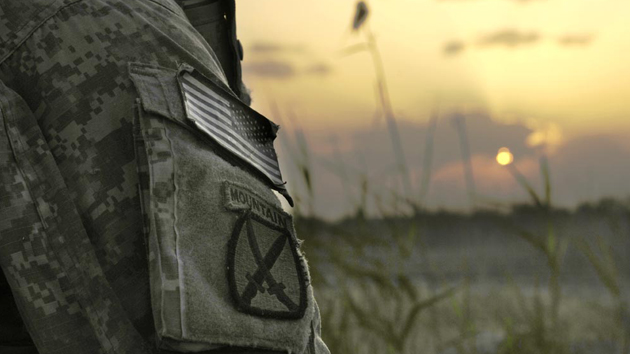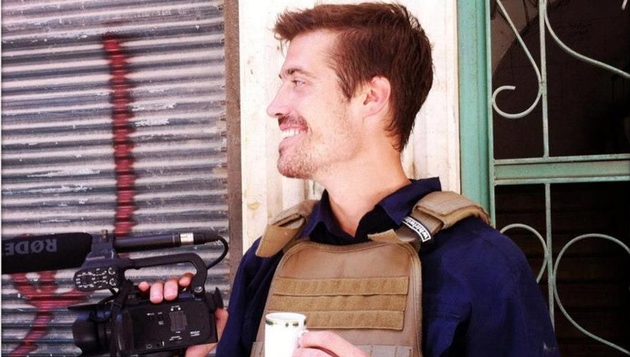Steven Sotloff (center with black helmet) talks to Libyan rebels on the Al Dafniya front line near in Misrata, Libya in 2011.
A video released today appeared to confirm the worst fears for the fate of captured American journalist Steven Sotloff: a beheading at the hands of Islamic State extremists. The video’s authenticity has not yet been confirmed by US officials, but the New York Times reports that Sotloff’s family believes he has been killed. If so, that means the 31-year-old Sotloff—who went missing a year ago while reporting in Syria—becomes the second American journalist executed by the Islamic State.
Last month, a video surfaced showing ISIS fighters executing American journalist James Foley. Many on the Internet seethed that the gruesome circumstances of his death appeared to overshadow his important work. The same shouldn’t happen to Sotloff. Ignore the sensational headlines and instead explore some of the brave, intelligent journalism he devoted his life to producing:
“Syrian Purgatory”: In this 2013 piece for Foreign Policy, Sotloff traveled to a Syrian refugee camp to report on the hundreds of thousands displaced by the civil war there. His chilling opening sets the tone for a story about the plight of refugees and the pitfalls of humanitarian aid: “It was less than 40 degrees Fahrenheit, and the winter wind cut to the bone. When I asked why she didn’t have a blanket like everyone else at the Atmeh refugee camp, [Um Ibrahim] shrugged and looked down. ‘I sold it to buy bread for my children.'”
“From Bread Lines to Front Lines:” Again in Foreign Policy, Sotloff went to Aleppo—one of the most devastated cities in Syria—to show how traumatic the daily lives of ordinary Syrians had become by late 2012. “The 21-month long Syrian revolution is taking its toll on residents of the country’s largest city,” he wrote. “With everything from medicine to firewood in scarce supply, and with winter bringing temperatures down to near freezing, people here are struggling to cope with a war they just hope will end.”
“The Other 9/11: Libyan Guards Recount What Happened in Benghazi:” For this TIME article, Sotloff—who covered Libya extensively for the magazine—interviewed Libyan security guards present when the US consulate in Benghazi was attacked. The result is a vivid, meticulous timeline of the events of September 11, 2012. One example: “Abdullah ran towards the cantina east of C villa where a grenade exploded nearby. ‘I remember the shrapnel that landed in my leg was very hot and I was shaken, a bit dizzy,’ he recalled. A group of attackers then passed him on the way to encircling the cantina. They shot him twice in the leg. Others beat him so hard he lost consciousness.”
“Libya’s New Crisis: A Wave of Assassinations Targeting Its Top Cops:” Here, Sotloff reported on the deadly aftershocks of the Benghazi attacks. In explaining the rash of killings of major Libyan security officials, Sotloff paints a compelling picture of the deterioration of post-Qaddafi Libya. “But the biggest loser today is a Libyan state stumbling from one crisis to the next,” he writes. “The government has not investigated the bombings and no one has been prosecuted.”
“The Alawite Towns That Support Syria’s Assad—in Turkey:” TIME featured some of Sotloff’s early reporting on the war in Syria. In 2012, he traveled to Turkey to report on Turkish Alawites’ support of Syrian President Bashar al-Assad. In doing so, he put himself in the thick of anti-American protests. “When an American journalist stops to ask about the group’s activities, though, a burly man in his 30s hisses him away, shouting, “America is funding terrorists in Syria!'”















